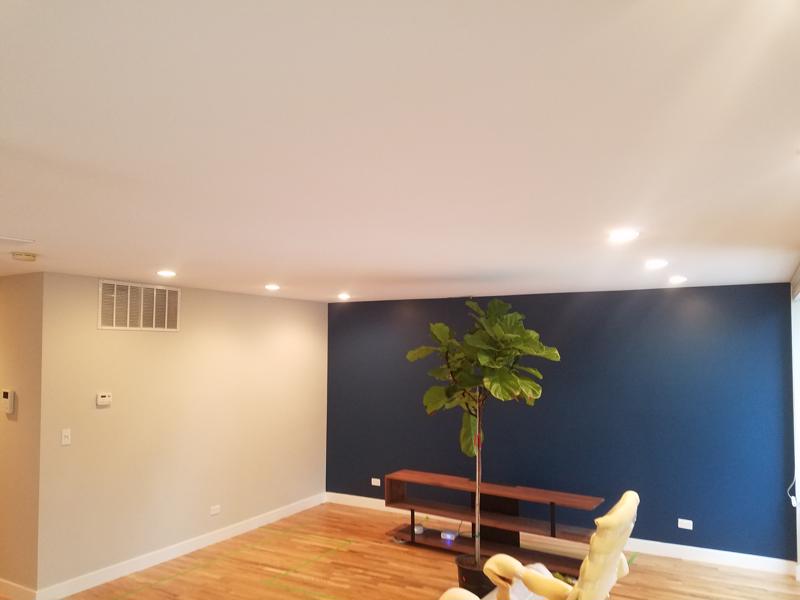
Before starting your painting project, it’s crucial to buy the right materials. As a trusted painting contractor in Chicago, we recommend making a checklist to avoid unnecessary purchases like excess paint or too many brushes. Instead, invest in washable paint, quality tools, protective plastic sheets, and masking tape to ensure a smooth process.
What Kind of Paint to Choose? – Wicker Park & West Town Painter Advice
When selecting paint, test it in natural and artificial lighting to see how it truly looks. Many paint stores have lighting simulators to help. Use color samples and apply a small test patch on your wall to observe how it interacts with the surrounding space. Low-VOC or Zero-VOC paints are ideal, especially for bedrooms or children’s rooms.
Paint Roller – A Must-Have Tool for Any Painting Contractor in Chicago
For large surfaces like walls and ceilings, rollers provide an even finish. The length of the roller’s nap determines the final texture—longer naps leave a textured look, while shorter naps result in a smooth finish. Using an extension pole can make painting easier and reduce strain.
Brushes – Essential for Detailed Work
For intricate areas, structural plaster, or hard-to-reach spots, a high-quality brush is necessary. A well-made brush holds paint evenly and prevents drips. Our West Town and Wicker Park painters use professional-grade brushes for precise results.
Protective Plastic, Masking Tape, and Other Essential Supplies
Cover floors and furniture with thick protective plastic and secure smaller items with thinner film. Use wide and narrow masking tape to protect trim, outlets, and switches. Sandpaper is also handy for smoothing imperfections before applying paint.
Preparation is Key – Chicago Painter Pro Tips
Spending extra time on surface prep ensures a better finish and faster cleanup. Proper prep work prevents streaks, uneven paint application, and premature peeling.
Wash Walls and Ceilings Before Painting
Before painting, clean all surfaces thoroughly. Remove dust, stains, and mildew to ensure paint adheres properly. Drywall repair is also essential—fix cracks and imperfections for a flawless finish.
Masking Tape and Floor Protection – A Must for Wicker Park Painter
Secure your workspace by covering floors and furniture. Apply masking tape firmly around edges to prevent paint from seeping through. Our painting contractors in Chicago always prioritize thorough prep work.
Painting Walls and Ceilings – Techniques from a West Town Painter
Start with the ceiling, working in sections. Apply multiple coats in alternating directions for full coverage. For walls, begin with edges and corners, then use a roller for large areas. Maintaining a wet edge prevents visible streaks.
Final Cleanup – Painting Contractor Chicago Guidelines
After painting, clean all tools immediately. Seal leftover paint, dispose of empty containers properly, and let fresh paint cure before moving furniture back. A well-ventilated space speeds up drying.

